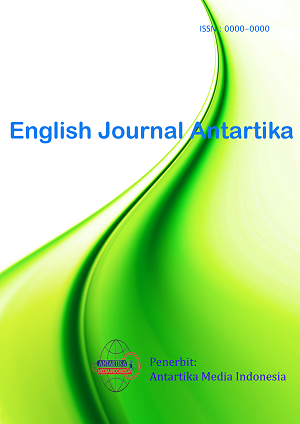Figurative Language in Billie Ellish’s Songs
DOI:
https://doi.org/10.70052/eja.v2i1.639Keywords:
Figurative Language, Billie Ellish, Song, culture, lyricsAbstract
This research aims to analyze figurative language in song lyrics as a form of emotional expression and personal narrative. The background of this study is based on the global phenomenon of Billie Eilish's popularity as an icon of the younger generation, recognized not only for her innovative music but also for her meaningful lyrics. This research aims to identify, analyze, and explore five figurative languages -metaphors, similes, symbolisms, hyperboles, and personifications- in Billie Eilish's songs, such as Lunch, TV, and Birds of a Feather. The methodology of this study employs a qualitative approach using critical discourse analysis designed to explain and explore the use of figurative language in depth. There are 16 figurative languages in Billie Eilish’s songs divided into five types. The details of those five types are five metaphors, three similes, three symbolisms, three hyperboles, and two personifications. From the result of the research, it can be concluded that figurative language has an important role in Billie Eilish’s song.
References
Ammanamanchi, S. L., Meeran, J. A., Dharmapuri, K., & Sharma, N. (2023). Basic Concepts of Literary Devices in English Literature. Academic Guru Publishing House.
Braun, V., & Clarke, V. (2006). Using thematic analysis in psychology. Qualitative Research in Psychology, 3(2), 77-101.
Creswell, J. W., & Poth, C. N. (2018). Qualitative inquiry and research design: Choosing among five approaches (4th ed.). Sage Publications.
Dovorany, N., Brannick, S., Johnson, N., Ratiu, I., & LaCroix, A. N. (2023). Happy and sad music acutely modulate different types of attention in older adults. Frontiers in Psychology, 14(January), 1–15. https://doi.org/10.3389/fpsyg.2023.1029773
Edmonds, D., & Sedoc, J. (2021). Multi-Emotion Classification for Song Lyrics. WASSA 2021 - Workshop on Computational Approaches to Subjectivity, Sentiment and Social Media Analysis, Proceedings of the 11th Workshop, 2008, 221–235.
Gibbs Jr, R. W., & Colston, H. L. (2006). Figurative language. In Handbook of psycholinguistics (pp. 835-861). Academic Press.
Kaiser, M. (2024). The idea of a theory of values and the metaphor of value-landscapes. Humanities and Social Sciences Communications, 11(1). https://doi.org/10.1057/s41599-024-02749-4
Kövecses, Z. (2002). Metaphor :A Practicla Introduction.
Lincoln, Y. S., & Guba, E. G. (1985). Naturalistic inquiry. Sage Publications.
McMullin, C. (2023). Transcription and Qualitative Methods: Implications for Third Sector Research. Voluntas, 34(1), 140–153. https://doi.org/10.1007/s11266-021-00400-3
Saldana, J. (2021). The coding manual for qualitative researchers (4th ed.). Sage Publications.
Shuker, R. (2001). “What’s goin” on?’: Popular culture, popular music, and media literacy. In Understanding Popular Music.
Tracy, S. J. (2024). Qualitative research methods: Collecting evidence, crafting analysis, communicating impact. John Wiley & Sons.
Zafarovna, Z. Q. (2024). EXPLORING THE USE AND TYPES OF FIGURATIVE LANGUAGE. Web of Teachers: Inderscience Research, 2(11), 258-260.
Zarina, Z., Qizi, K., & Gulbaxor Baxromovna, M. (20 C.E.). THE IMPORTANCE OF STUDYING METAPHORS IN LITERATURE FOR THE ANALYSIS AND COMPREHENSION OF THE CONTEXT.
Downloads
Published
Issue
Section
License
Copyright (c) 2024 Ficky Anis Setiawan, Jonathan Calvin Theodora

This work is licensed under a Creative Commons Attribution-ShareAlike 4.0 International License.
Copyright Policy Statement
Authors who publish their manuscripts through English Journal Antartika agree on the following:
1. The copyright holder of the article is the author(s).
2. The author gives the right to publish the scientific articles to English Journal Antartika as the first publisher. The author gives permission/license regarding the Creative Commons Attribution License to other parties to distribute the articles.
3. Non-exclusivity stuff in Journal distribution publishes the author's scientific articles can be agreed upon separately (e.g., a request to insert in the institution library or publish as a book) then adjust the author as one of the parties and English Journal Antartika as the first publisher.
4. Authors can publish the article online before and during the manuscript submission process (e.g., in the Repository or on the organization's/institution's website), as this can promote the earlier exchange of citations.
5. Manuscripts and related materials published through this Journal are distributed under a Creative Commons Attribution-ShareAlike 4.0 International License (CC BY-SA)









